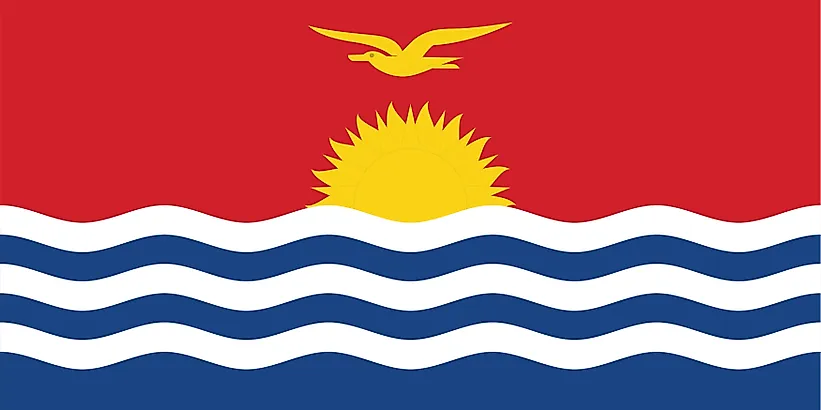
キリバス
| 大陸 | オセアニア |
| 資本金 | タラワ |
| 人口 | 106,925 |
| GDP | $211.00百万ドル |
| 一人当たりGDP | $1,800 |
| ダイヤルコード | +686 |
| ISOコード(2文字) | ヨウ化カリウム |
| ISOコード(3文字) | KIR |
キリバス 風景






キリバスについて
広大な太平洋に点在する環礁と島々の国、キリバスへようこそ。350万平方キロメートルの海に広がる33のサンゴ環礁に約12万人が暮らすキリバス共和国は、世界で最もユニークで脆弱な島国のひとつです。
地理的特徴と自然の美しさ
キリバスには、ギルバート諸島、フェニックス諸島、ライン諸島の3つの島がある。赤道と国際日付変更線の両方にまたがるこの国は、新しい日を迎える最初の国である。
景観は主に低地のサンゴ環礁で構成され、そのほとんどは海抜3メートル以下である。世界最大級の海洋保護区であるフェニックス諸島保護区(PIPA)は、この国の海洋保護への取り組みを示している。
フェニックス諸島の海は、多様なサンゴ礁、数多くの魚類、海鳥など、海洋生物で満ちあふれている。フェニックス諸島の手つかずの環境は、その類まれな海洋生物多様性により、ユネスコの世界遺産に登録されている。
文化遺産と伝統
I-キリバス文化は海と深く結びついており、航海、漁業、気象パターンに関する伝統的な知識が何世代にもわたって受け継がれてきた。特にテ・ブキと呼ばれるスタンディング・ダンスが有名だ。
伝統芸能には、マットや衣服に使われるパンダナス織りがあり、島によって独特の模様がある。音楽は文化生活の中心的役割を担っており、伝統的な歌はしばしば祖先や歴史的な出来事を物語っている。
キリバス料理の中心はシーフードと地元産の農産物、特にココナッツ、パンノキの実、パンダナスの実である。何世代にもわたって培われてきた伝統的な食品保存技術は、食料安全保障のために重要であり続けている。
歴史の旅
キリバス諸島の歴史は、初期のミクロネシア人入植からさまざまな植民地時代を経て、1979年の独立に至る。タラワの戦いは太平洋戦争の重要なターニングポイントとなった。
重要な時代には、ヨーロッパ人探検家の到来、イギリスの植民地支配、独立後の国家建設への挑戦などがある。この地域での核実験の経験は、現代の環境擁護を形成している。
現代の経済状況
今日のキリバス経済は、伝統的な自給自足活動と、漁業ライセンス収入や観光業を含む近代的な部門を併せ持っている。広大な排他的経済水域は、重要な漁業資源を提供している。
最近の取り組みは、気候変動への適応、持続可能な資源管理、再生可能エネルギーの開発に重点を置いている。リン鉱石採掘収入に由来するキリバス政府系ファンドは、経済の安定を支えている。
国際関係とグローバルポジション
キリバス共和国は、太平洋地域の協力を促進しながら、気候変動に関する国際的な議論において積極的な発言力を維持しています。海面上昇を経験した同国は、世界的な気候変動対策の強力な支持者となっている。
ご存知でしたか?
- キリバスは世界で唯一、4つの半球すべてに位置する国ですか?
- フェニックス諸島保護区は世界最大級の海洋保護区である。
- 伝統的な航海術は今でも実践され、若い世代に教えられているのか?
- 1943年のタラワ沖海戦は、第二次世界大戦中の太平洋戦争で最も血なまぐさい戦いのひとつだった?
結論
キリバスという国は、太平洋の伝統文化と現代の環境問題のユニークな融合を象徴している。広大な海洋領土から豊かな文化遺産まで、伝統的な慣習から現代的な適応戦略まで、キリバス独自のアイデンティティを守りながら、21世紀の課題に挑み続けています。気候変動と海面上昇という存亡の危機に直面する中、キリバス独自の生活様式を維持しながら、持続可能な開発と環境保護に取り組んでいます。